If you rack up a lot of miles, or plan to, finding the best women's mountain bike saddle for you is a worthy task, ultimately saving you discomfort and preserving the health of your nether regions.
However, there's no denying it's a tricky affair. Due to everyone's own anatomy and riding style, what works for one rider might not work for you, and vice versa.
Fortunately, the women's saddle market is growing in line with female participation in the sport as a whole. There are now saddles that cater to different anatomies as well as incorporating a variety of design elements, which should mean there's a saddle out there that will tick all the right boxes for you.
While finding the perfect saddle for you would ideally involve personally testing as many alternatives as possible, this probably isn't going to happen. So we have put six women's mountain bike saddles to the test to help you make an informed decision on which saddle to go for next and to help you unlock a more comfortable ride.
We've also put together a buyer's guide for women's mountain bike saddles at the end of this article, so you can be better informed to choose the right saddle for you, your riding style and your priorities.
We also have a dedicated guide on how to choose the right saddle and a list of the best women's road bike saddles. Our guide to the best mountain bike saddles includes unisex options.
Best women's mountain bike saddles in 2025
Ergon SM Women
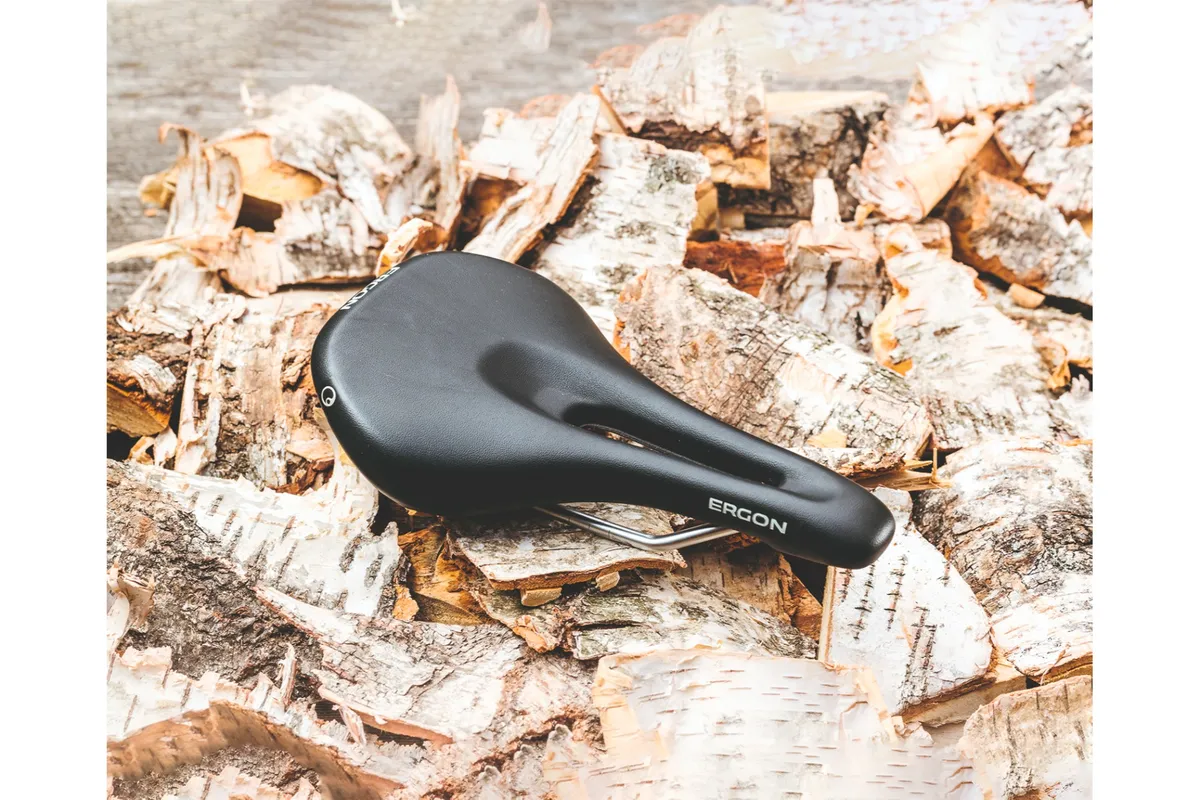
- £64.99 as tested
- 296g
- S/M width (90-120mm) or M/L width (120-160mm) options
- Pros: High levels of comfort; doesn't wear easily; good value
- Cons: Not the most high-tech construction
A truly minimalist design, Ergon’s SM Women features orthopaedic comfort-foam inserts, based on a nylon-composite shell and topped with a plain microfibre cover.
There’s a narrow cut-out down the centre and it has chromoly rails, giving a weight of 296g for the M/L size tested. Towards the rear, it curves upwards very slightly.
With its sleek cover and curved outline, it doesn’t get in the way on the techy steep stuff, and despite choosing the wider option, there was no interference with our inner thighs when pedalling.
From short, punchy rides to all-day outings featuring long, pedally climbs, the SM Women has proven to be supremely comfortable.
The cut-out relieves any pressure on soft tissue, especially in a more aggressive climbing position, while the padding around the back prevents any discomfort around the sit bones.
It’s easy to keep looking clean, thanks to the plain, single-material cover, and although there aren’t any additional features that you might find elsewhere, such as light-attachment points, we’ll take top comfort over gadgets any day.
At £64.99, it’s great value for the level of comfort offered, although there’s a small weight penalty compared to some others here. This combination of comfort, value for money and minimalist design makes the Ergon SM Women our ‘best on test’.
Fizik Vento Argo R1 Adaptive Saddle

- £299 / $299 / €299 / AU$450 as tested
- 198g
- 140, 150mm
- Pros: Comfortable for long distances; versatile; lightweight
- Cons: Expensive; not easy to clean
The Vento Argo R1 is made using 3D-printed technology, which allows for multiple function zones to be built into the padding.
We found the saddle very comfortable for long days on the bike, providing good support on steep terrain.
Unfortunately, the 3D-printed design makes it hard to keep looking fresh because mud quickly works itself into the honeycomb.
Specialized Phenom Expert with MIMIC
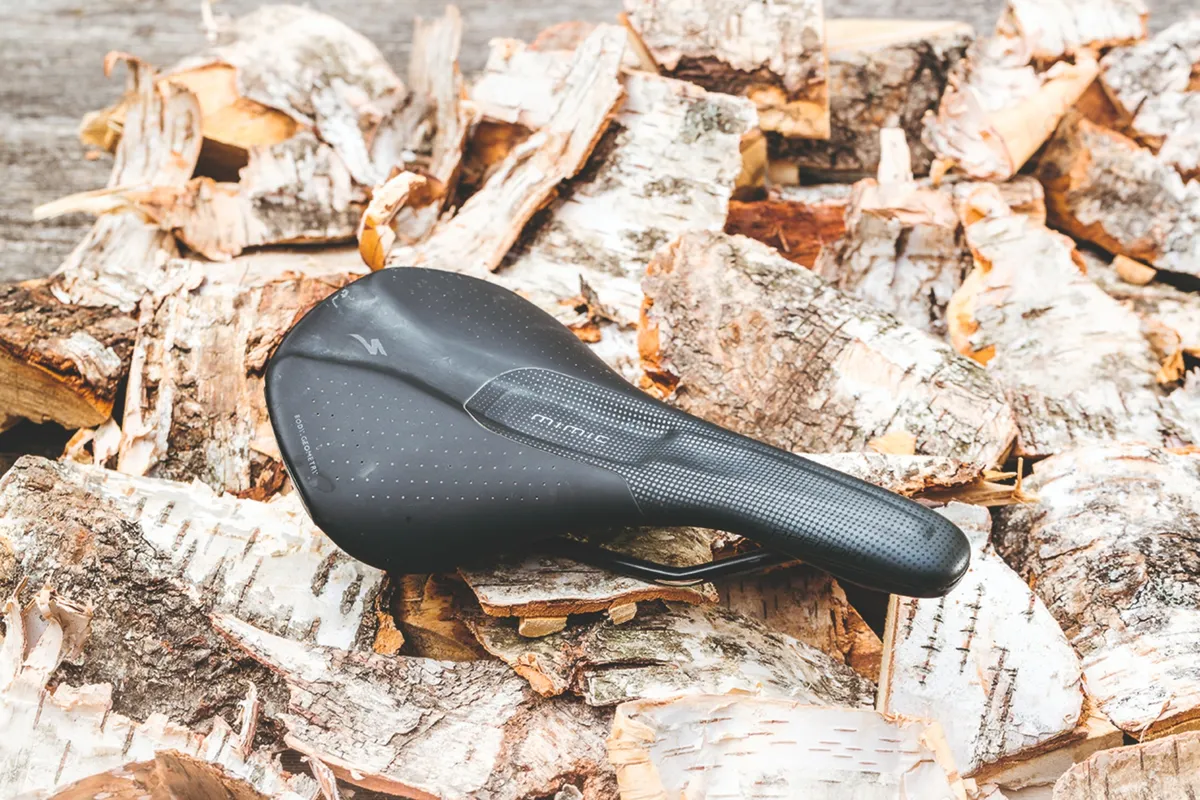
- £115 as tested
- 252g
- 143, 155, 168mm
- Pros: Great comfort; lightweight; durable
- Cons: Slight numbness on long fire-road climbs
MIMIC technology, which uses a multi-layered material, including areas of memory foam, to minimise soft-tissue swelling – is being rolled out to more of Specialized’s perches.
On the Phenom, you get a recessed channel rather than a full cut-out, and a longer nose than on the popular Power saddle.
At Expert level, hollow titanium rails give a nifty weight of 252g for the 155mm-width option, with sizing determined by a handy online tutorial to help you measure up at home using cardboard. Aesthetically, it’s one of our favourites on test.
The MIMIC tech yielded supreme comfort in soft-tissue areas, but after really long fireroad climbs we did find a little numbness further back around the sit bones.
Specialized Power Comp with MIMIC Saddle

- £95 / $140 / €110 as tested
- 234g
- 143, 155, 168mm
- Pros: Comfortable, upright position; snag-free design; plenty of sizes
- Cons: Not the best for all-day rides; lack of cutout won't suit everyone
This Power Comp saddle features Specialized's MIMIC technology, which uses multi-layer technology to reduce soft-tissue swelling.
We found the saddle to be great for short to medium-length rides, with longer sessions proving more uncomfortable around the labial area.
The saddle comes in a variety of sizes, so finding one that fits should prove easy, and we found it to be durable when out on the trail.
Liv Approach SL

- £70 / €60 / AU$130 as tested
- 247g
- 155mm width only
- Pros: Relief channel is effective; relatively lightweight; well-priced
- Cons: Wide wings and long nose can limit manoeuvrability
The Approach SL offers great versatility and can be used for multiple disciplines. It also features Giant's UniClip system, making it compatible with a wide range of accessories.
We found the saddle comfortable while seated, with the relief channel helping avoid soft-tissue swelling while offering sit-bone support.
The shape of the saddle caused some manoeuvrability challenges when out on the trails.
Liv Sylvia
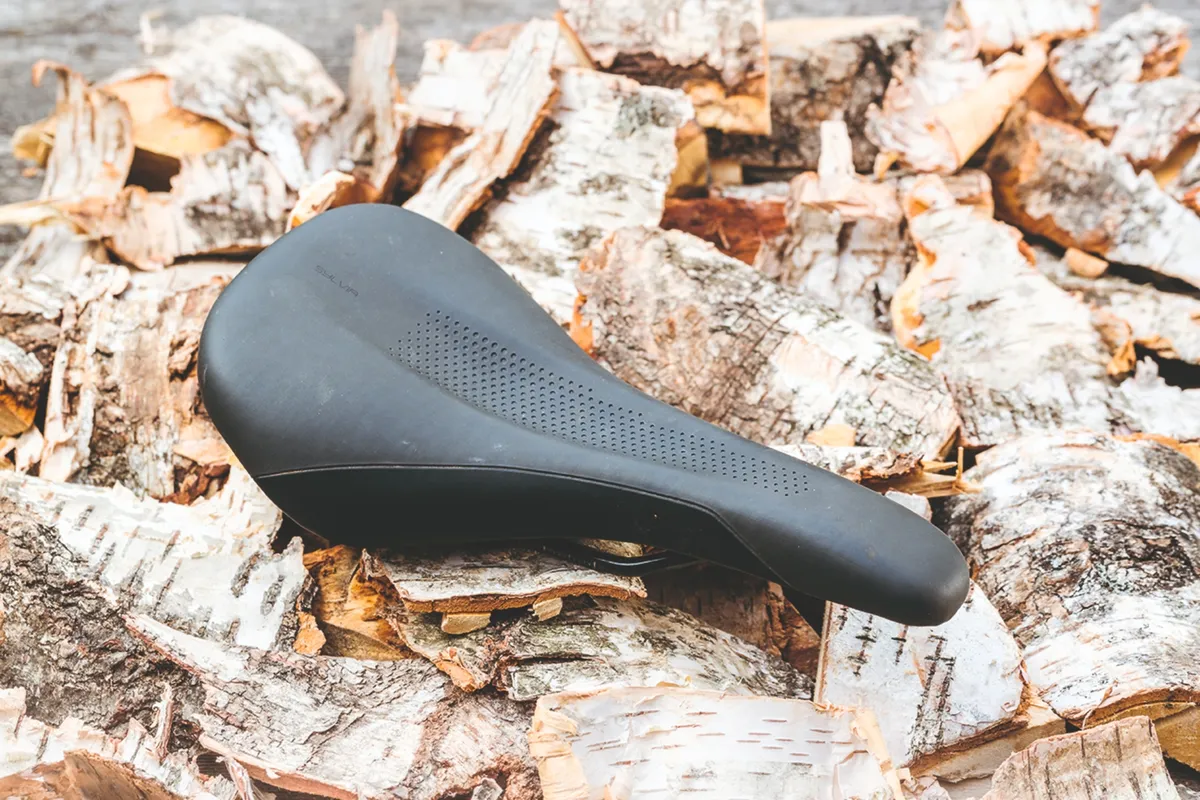
- £39.99 as tested
- 345g (335g claimed)
- 150mm width only
- Pros: Firm yet comfortable; well-priced; good for upright pedalling
- Cons: Not the lightest; pattern collects mud
The Sylvia has steel rails and is only available in a single width.
This long-nosed perch from women’s brand Liv has a recessed central channel and a curved profile, raised slightly at the back and with a downward-tilted nose – a design typically associated with a more upright position.
The Sylvia felt hard to start with, but we were pleasantly surprised by the level of comfort once we got going, as well as the lack of interference on technical descents.
With a single width on offer, it won’t suit all riders, but as a budget-friendly option we think it’s hard to beat.
Aside from the weight, the only other downside is that the pattern of recessed dots in the central channel can hold onto dirt, making it tough to keep the saddle looking fresh.
Also consider...
These bikes scored fewer than four stars out of five, though are still worth considering.
Ergon SM E-Mountain Sport Women Saddle

- £90 / $100 / €100 / AU$120 as tested
- 265g
- 143mm or 155mm
- Pros: Well thought-out padding; cut-out adds relief
- Cons: High back snags clothing; slippery cover
The SM E-Mountain Sport Women Saddle has a comfortable profile that remains problem-free on longer rides.
We found the high back of the saddle didn't aid much on steep climbs and negatively affected riding on the descents by snagging clothing.
Glue residue and messy edges detract from the quality of the saddle, and we found the cover to be slippery, causing movement when pedalling.
Fizik Luna X5 S-alloy

- £94.99 as tested
- 255g
- 145mm or 155mm widths
- Pros: Good cushioning; built-in flex adapts to body shape; durable
- Cons: Not the most comfortable on the rivet
The angular silhouette of the Luna is instantly recognisable, covered with a dual-textured, multi-layer upper and with a long central cut-out. There’s carbon fibre reinforcement in the centre of the nylon shell, and the turquoise panels under the wings flex generously to adapt to your body shape.
This women’s-specific model comes in two widths, weighs an impressive 255g with alloy rails, and is handmade in Italy.
We didn’t get on with the wider 155mm Luna when we tried it on a gravel bike, but enjoyed a much better experience with this 145mm version on a mountain bike.
The only time we noticed some slight discomfort was when sliding forward on a techy climb, due to the slightly bulbous nose.
Branding is minimal and the textured side panels shrug off scuffs, although they also retain dirt easily.
Syncros Savona V1.0 Channel
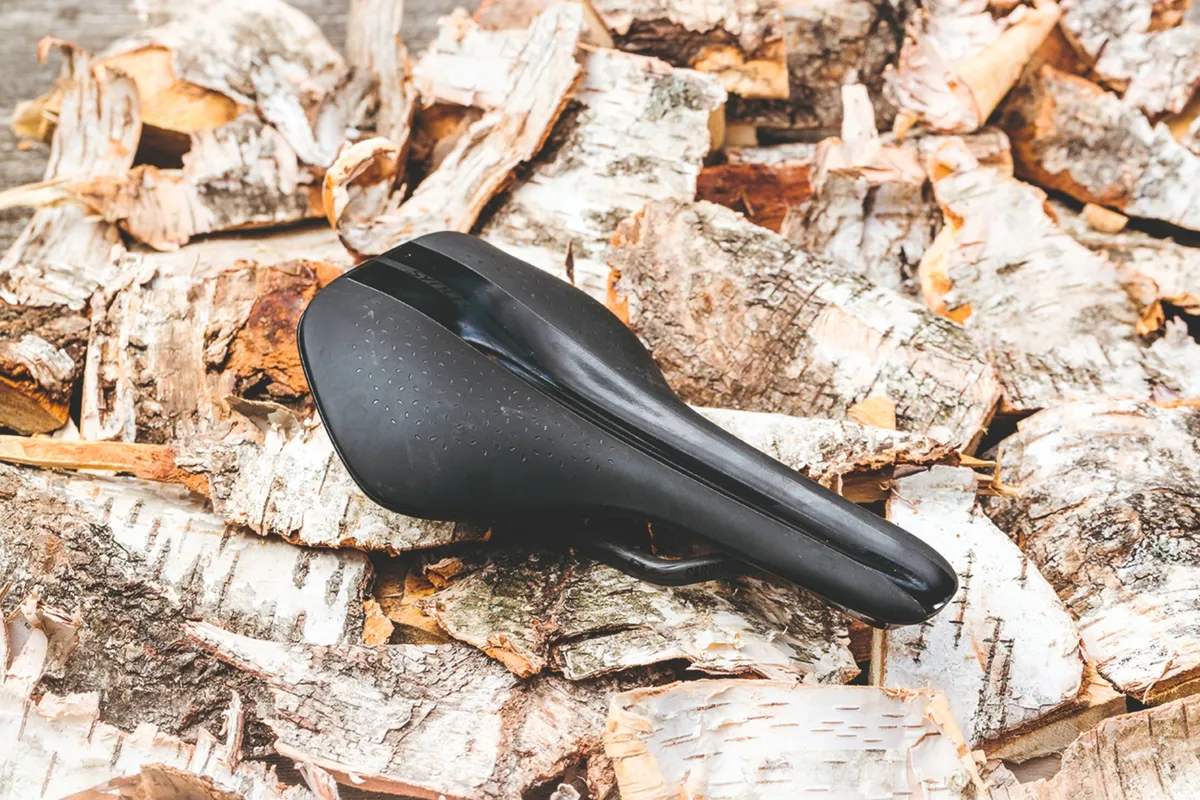
- £134.99 as tested
- 195g
- 145mm single width
- Pros: Neat accessory mounting; racier option; lightweight
- Cons: Thick padding and flat nose weren't the most comfortable
Syncros’s Savona was developed in conjunction with German bike-fit specialists gebioMized. You can choose between Regular or V-Concept fits based on your riding position, with V-Concept for a lower, racier stance, supported more by the pubic bones than the sit bones.
Then select either a central channel or a cut-out, and a spec level (1.0, 1.5 or 2.0).
We opted for the V-Concept fit, a channel and the carbon fibre-railed 1.0 spec, which makes for the lightest saddle on test. A mount underneath for a bag, action camera or mudguard is a neat addition.
The Savona V won’t be everyone’s cup of tea, as we found from the first ride. Thick padding around the sit bone area and a short, flat nose caused us some discomfort on longer climbs, although the curved silhouette does keep it snag-free when descending.
SDG Allure V2 Women's Lux-Alloy Saddle

- £90 / $90 / €83 as tested
- 1,257g
- 143mm
- Pros: Various colours; provides good grip and comfort on descents
- Cons: Cover wears easily; solid padding is uncomfortable
Our tester found the Allure V2 to lack comfort even on short rides, with the solid padding and short relief channel not adding to overall comfort.
We also found the cover to wear easily, as much as we liked the choice of colours.
If you're looking for a saddle to fit a park bike, then the Allure V2 is worth considering.
How we tested
We've put women's-specific and unisex mountain bike saddles to the test on our home trails and fire road climbs to bring you our favourite options.
A focus has been made on comfortable sit-bone support and pressure relief for tender areas between the legs.
We’ve tried to keep prices reasonable, so we’ve steered away from titanium or carbon fibre in general, although many saddles come with those options.
Prices range between £39.99 and £299, with the resulting scores taking not only performance into account but also value for money.
Saddles are perhaps the most individual part of your mountain bike setup – not to mention being crucial for overall comfort on the bike, so remember that just because something does or doesn't work for us, it may not be the same for you.
Buyer's guide to women's mountain bike saddles
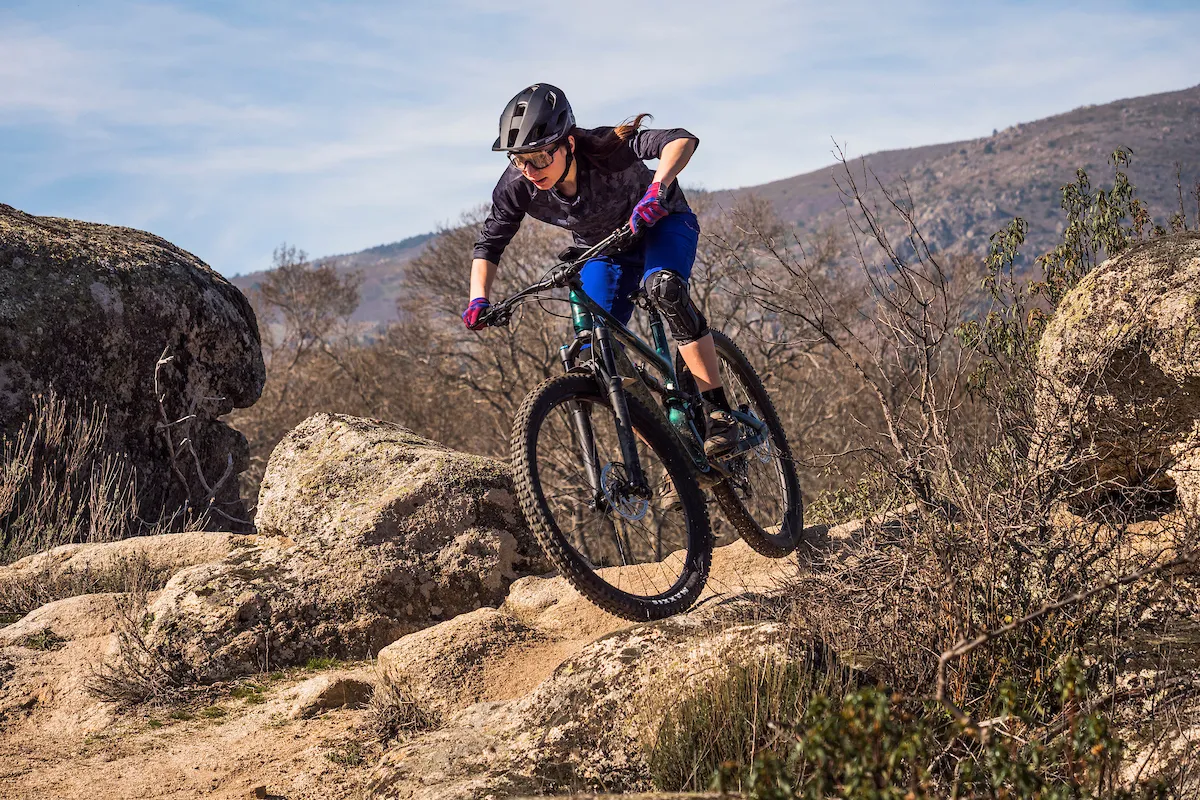
Do you need steel or carbon rails? A cut-out or channel? Short-nosed or long-nosed saddle? There are many questions when it comes to finding the right saddle, so understanding their constituent parts can help you choose the best one for your riding style, size and budget.
Anatomy of a saddle
Width

This is the most important measurement to get right. Too narrow and your sit bones will be left hanging over the edges of the saddle; too wide and it won’t give your legs space to move. Check below for more on how to measure your sit bones, or look up one of the step-by-step tutorials on YouTube.
Shape
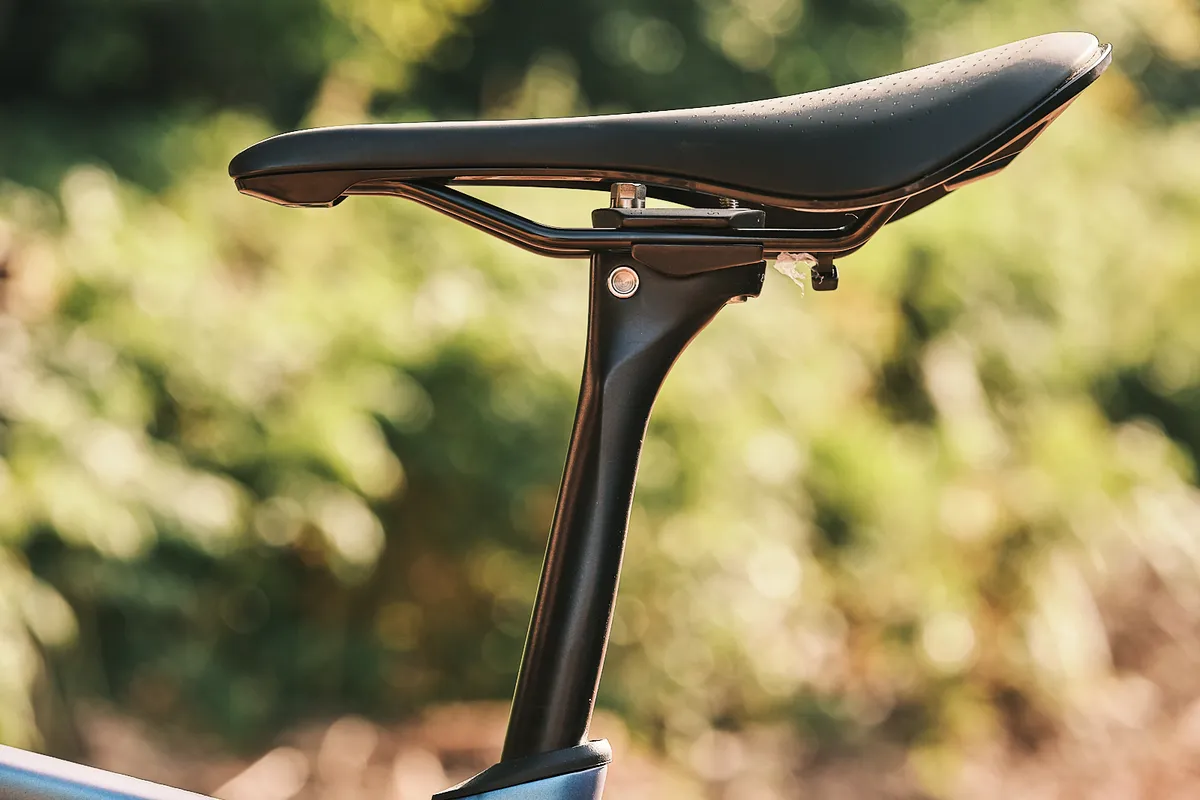
Viewed side-on, most saddles are concave to some degree and rise slightly at the back for support. Viewed straight-on, saddles vary from almost completely flat to some with sides that taper off and curve downwards.
This can increase clearance and reduce thigh chafing, but in some cases can put pressure on your sit bones, which is very uncomfortable.
Pressure channel or cut-out
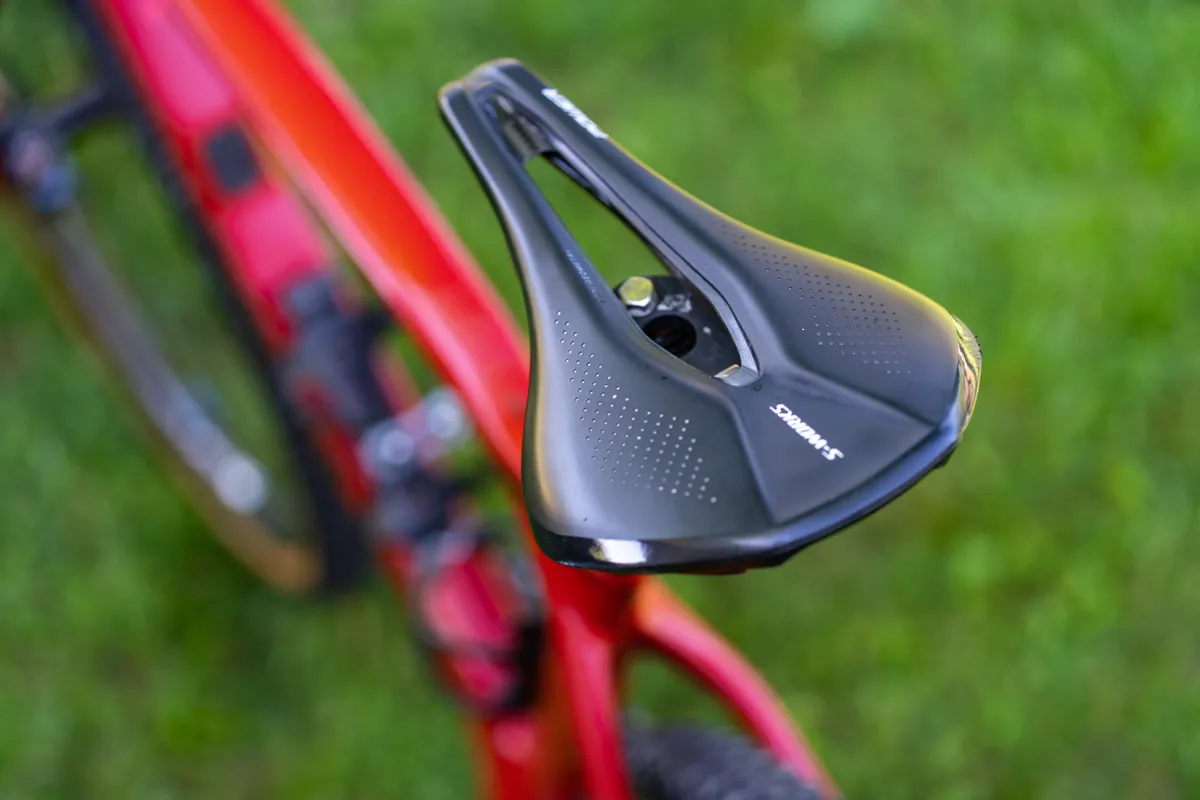
Nearly all saddles have some sort of central depression to reduce perineal pressure. This might be a hollow or a channel – sometimes with a slice out of the shell underneath the padding, or a cut-out through both.
Padding
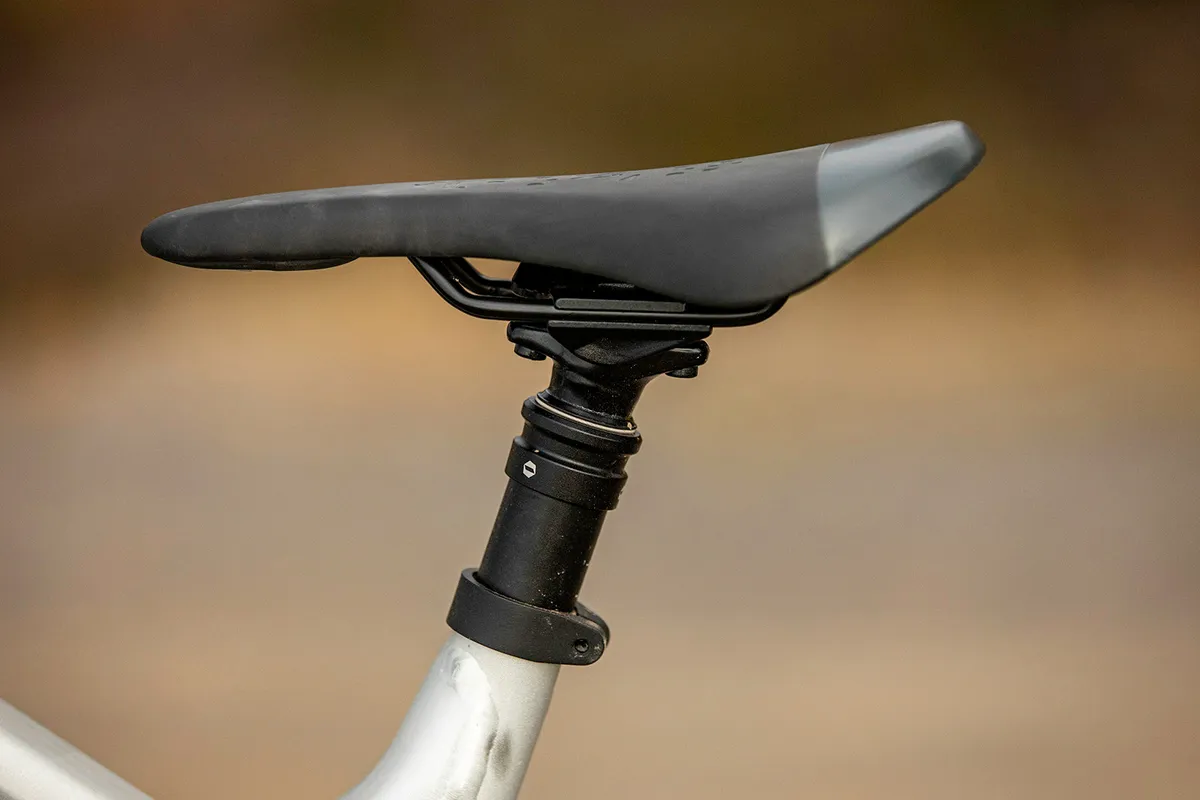
The depth, density and distribution of foam padding can have a big effect on comfort – sometimes adversely. Too much of it can lead to chafing or your weight being pushed forwards onto the saddle nose.
Rails
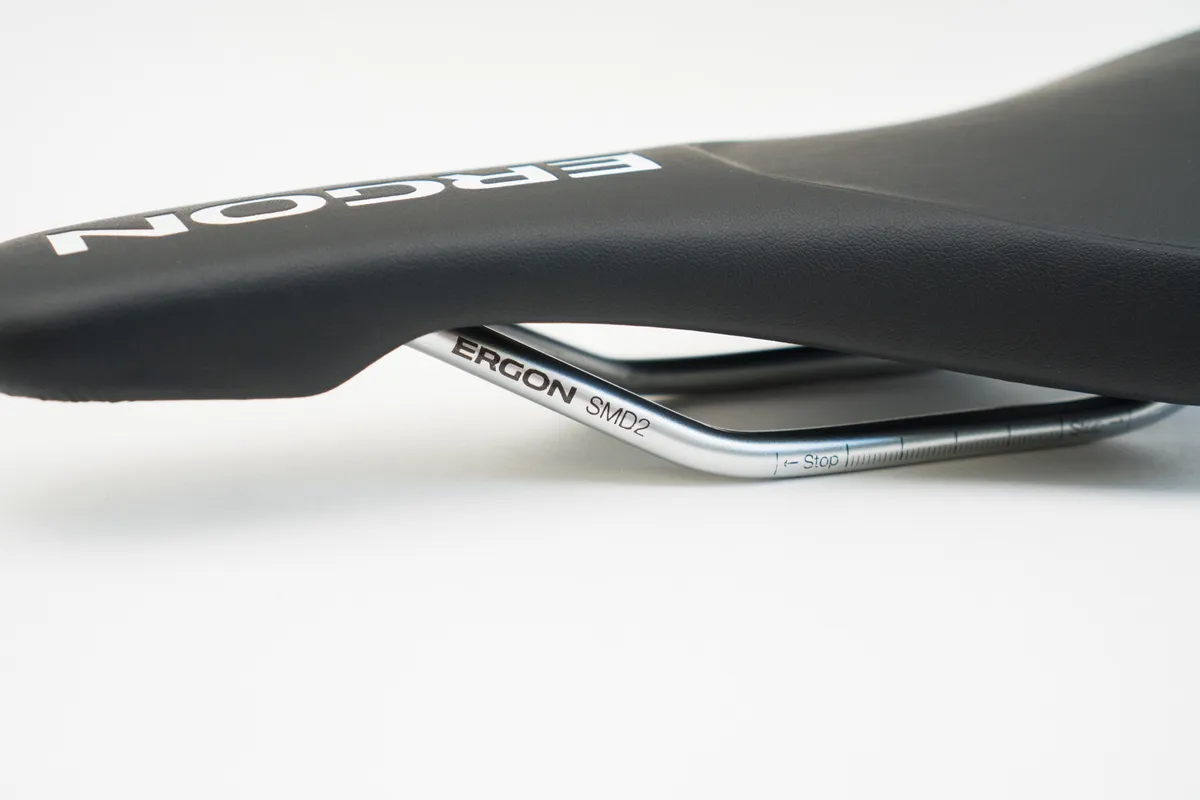
These connect the shell of the saddle to the seatpost clamp. They’re usually made from chromoly steel or titanium, and occasionally carbon fibre on top-spec models.
Spending more to get hollow or Ti rails will save some weight and potentially add more compliance, helping to filter out some trail vibration. Chromoly steel is the cheapest and heaviest option, with hollow rails often used to save a few grams.
Nose
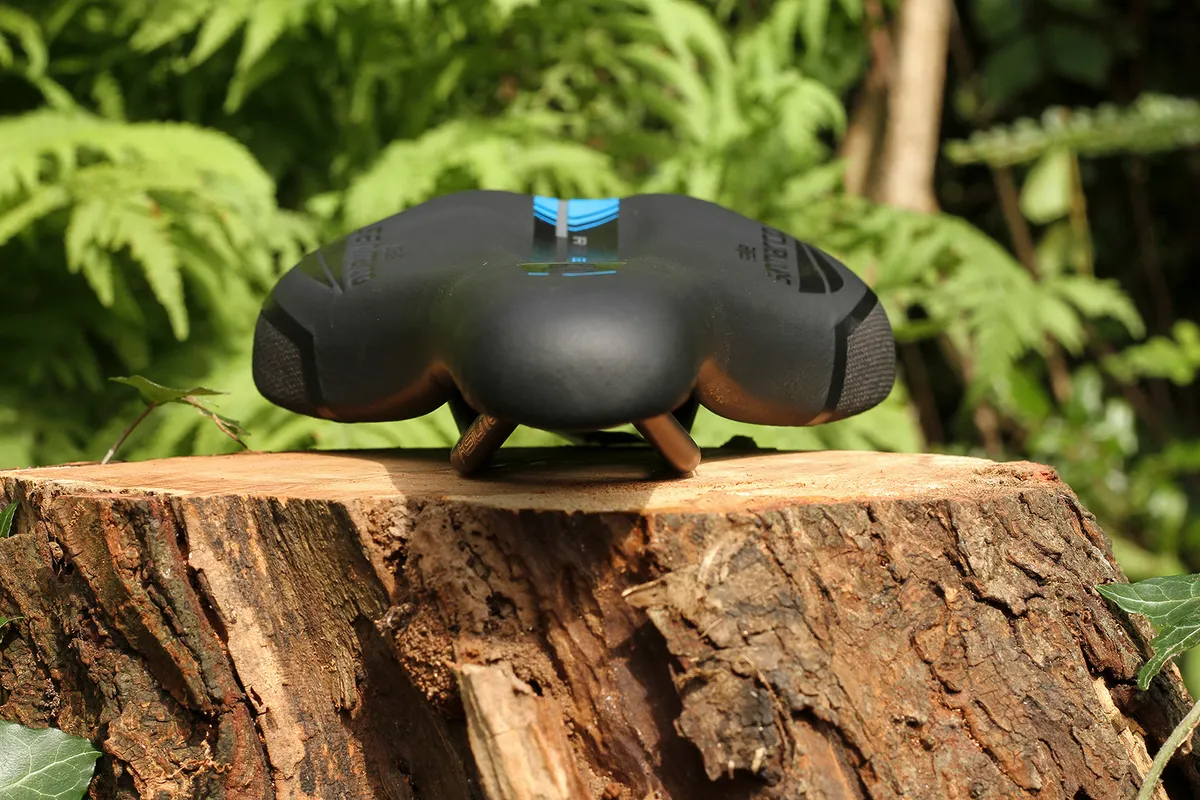
The front of the saddle plays an important role in seated pedalling, especially on climbs. It needs to be wide enough to give support, but not so wide that it chafes your inner thighs or obstructs your movement on the bike.
Shell
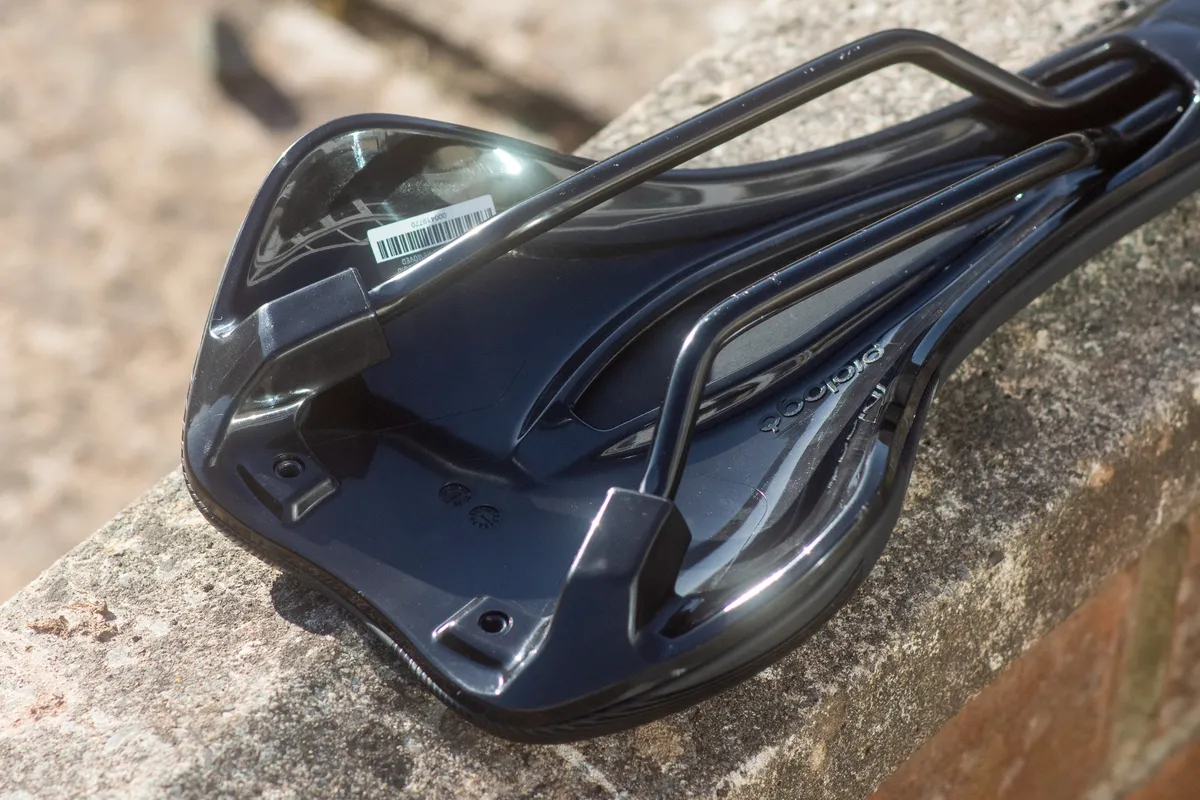
Also called the ‘hull’, this is the base material that the padding and saddle rails are attached to. Its shape is the biggest defining factor in how a saddle will feel.
What it’s made from and how thick the material is will affect flex. A good saddle will have a certain amount of compliance, allowing it to mould to your shape and helping to lessen trail feedback felt through the bike. Shell construction, depth and density of padding, and rail material all factor in to the level of flex too.
The shell is usually plastic or composite, but carbon fibre is a weight-saving option if you’re happy to spend more.
Calculating your sit bone width

An essential step in making your selection is to calculate your sit-bone width. Known formally as the ‘ischial tuberosity’, these are the two rounded parts at the bottom of your pelvis that take most of your weight when sitting on a bike. The distance between them varies, so it’s important to support them properly.
You can measure yourself easily by sitting on a square of cardboard and noting the distance between the centre of the indentations. Then, as a rough guide, add 25 to 30mm to work out how wide a saddle you need.
Riders who favour a more relaxed, upright position on the bike generally require more width, while cross-country riders and roadies adopting a more aggressive stance tend to go narrower, as do DH and enduro racers looking for freedom of movement.
What's different about women's-specific saddles?
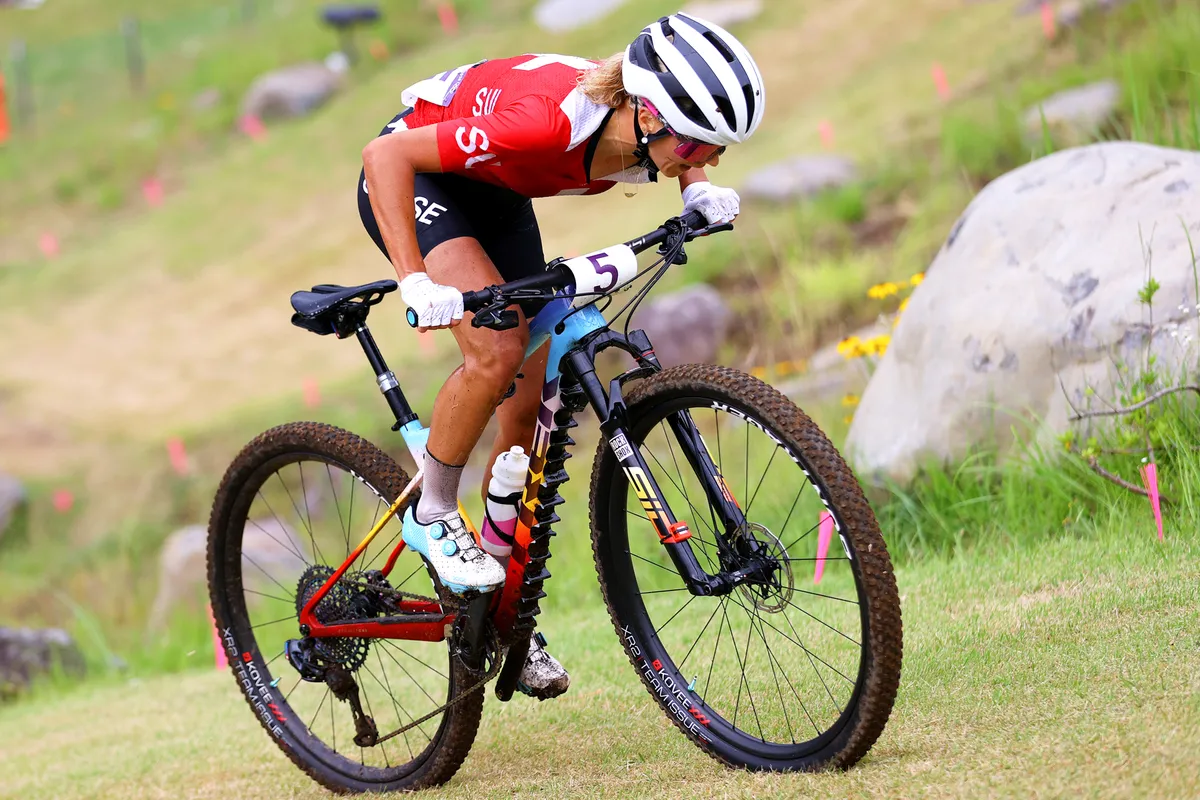
On average, women tend to have slightly wider sit bones and a greater degree of pelvic rotation, not to mention different soft tissue composition to men, so it's clear to see why many women prefer to use a women's-specific saddle.
Different shapes, material densities, areas of padding, central grooves and cut-outs are all tools used by brands designing women's-specific saddles, aligning with the rider they host. Giving support where needed, at the sit bones, and relieving pressure against areas of soft tissue is the goal.
Having said this, some female riders are comfortable on unisex saddles, so they shouldn't be ruled out. There are also a number of men who use women's saddles; it just comes down to what works for you as an individual.
Saddle setup
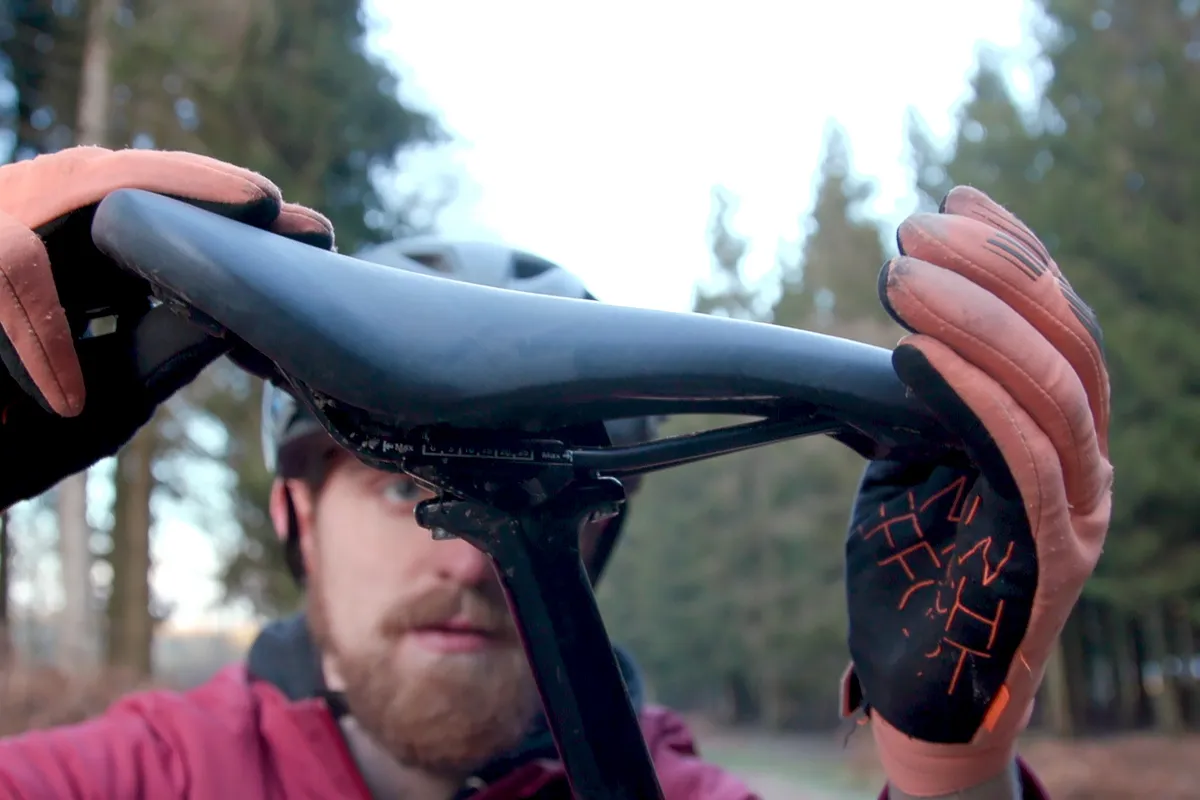
Besides choosing the right saddle for you, how you set it up can also make a significant difference to how comfortably it fits. There are two main considerations to take into account when clamping your saddle to the seatpost: how you position it fore and aft, and the saddle angle, flat or tilted.
To start with, it's a good idea to opt for a completely flat saddle position (i.e. no tilt), which is suitable for the majority of riders. Some, however, prefer a slight downwards tilt at the nose to minimise pressure on soft tissues, so you can experiment with this to see what works best for you.
A professional bike fitter will be able to pinpoint the optimal position to clamp your saddle rails towards the front or back of the bike. You can also experiment with this yourself to see what works best for you.
As before, start in the middle of the clamping area and assess how moving the saddle fore or aft affects your comfort. Take note of the limits of the clamping area on the saddle rails and make sure you don't exceed these.
How much should I spend on a mountain biking saddle?
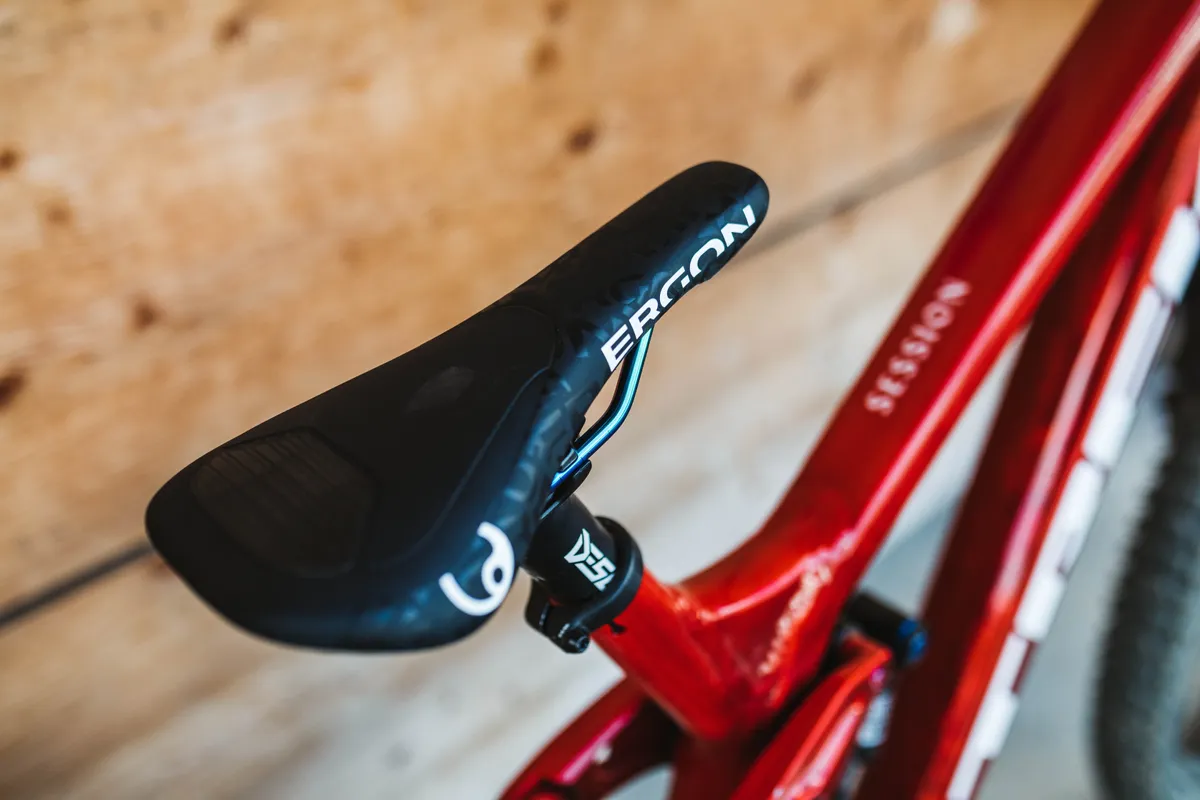
Generally speaking, as you go up through the ranges to more premium, higher-budget saddles, you'll find more lightweight materials used for the construction. The most obvious elements here are the saddle rails, generally starting with chromoly steel for budget saddles and working up to carbon fibre or titanium rails at higher price points.
Some saddles offer additional features, such as clips or mounts for saddle bags, lights or even cameras. Beware that these may push up the price, and while these gadgets might be handy, you should prioritise comfort over unnecessary features.
